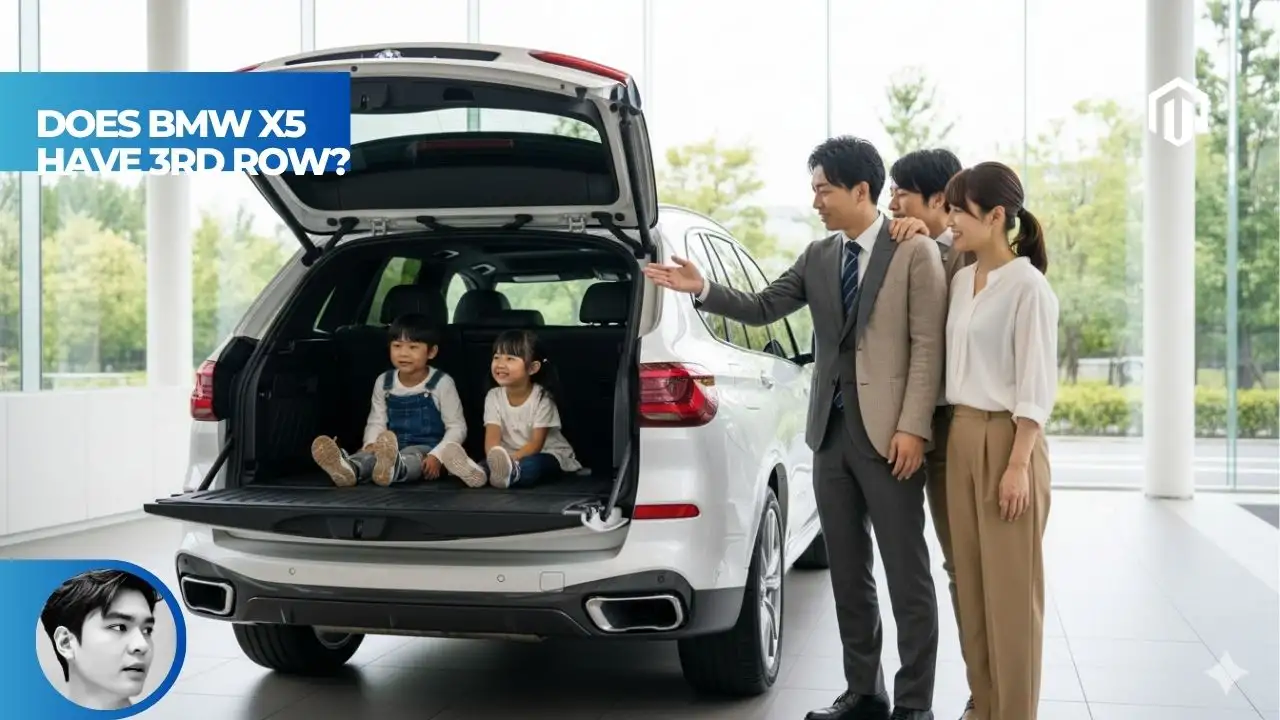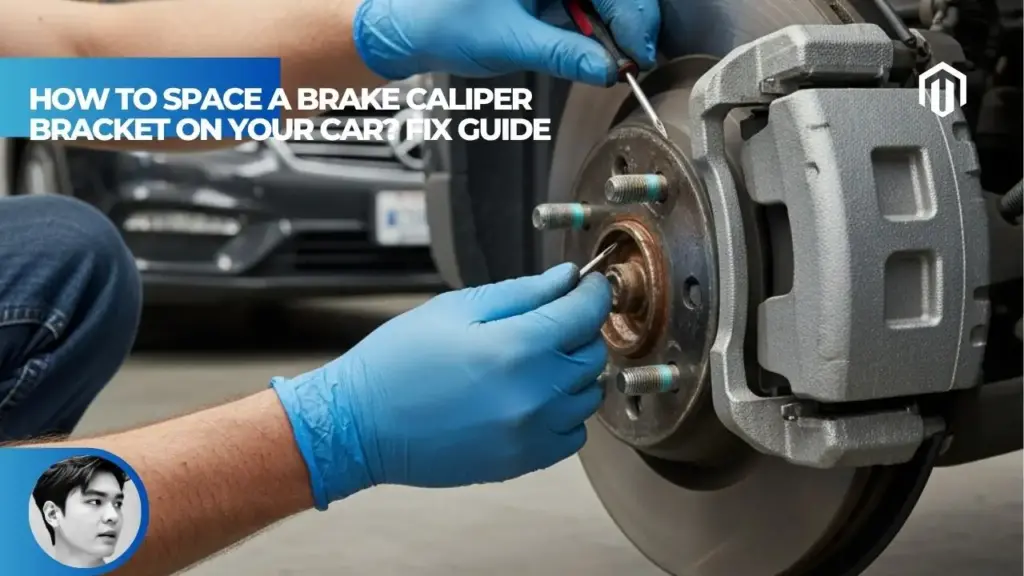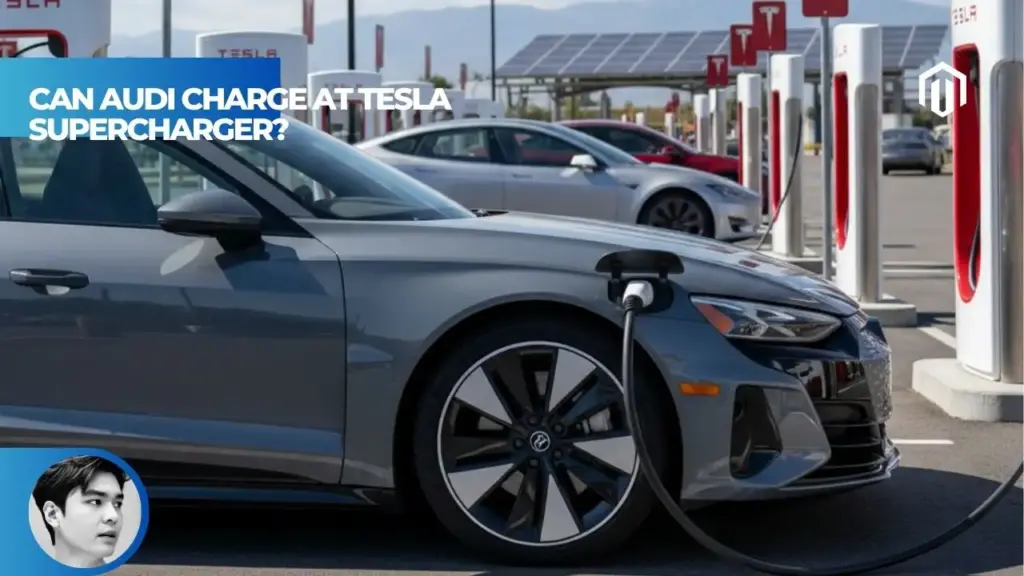You may also like:
- 【Explained】What Did BMW Start Making Before Cars? (From Planes to Cars)
- 【Explained】What Is the Difference Between a BMW X3 and X5? (A 2025 Buyer’s Guide)
- 【Explained】Can BMW Charge at Tesla Supercharger? The NACS Adoption Timeline Explained
- 【Explained】What Is More Expensive: BMW or Mercedes? (Cost of Ownership)
- 【Explained】What Is The Length Of A BMW X5? (A Full Garage Fit Guide)
The BMW X5 offered optional third-row seating from 2007 through early 2022, but BMW discontinued this option starting with the 2023 model year in North America, now directing seven-seat buyers to the larger X7. The third row was never standard equipment and when available, it cost $2,000-$2,300 extra while providing minimal space suitable only for children on short trips.
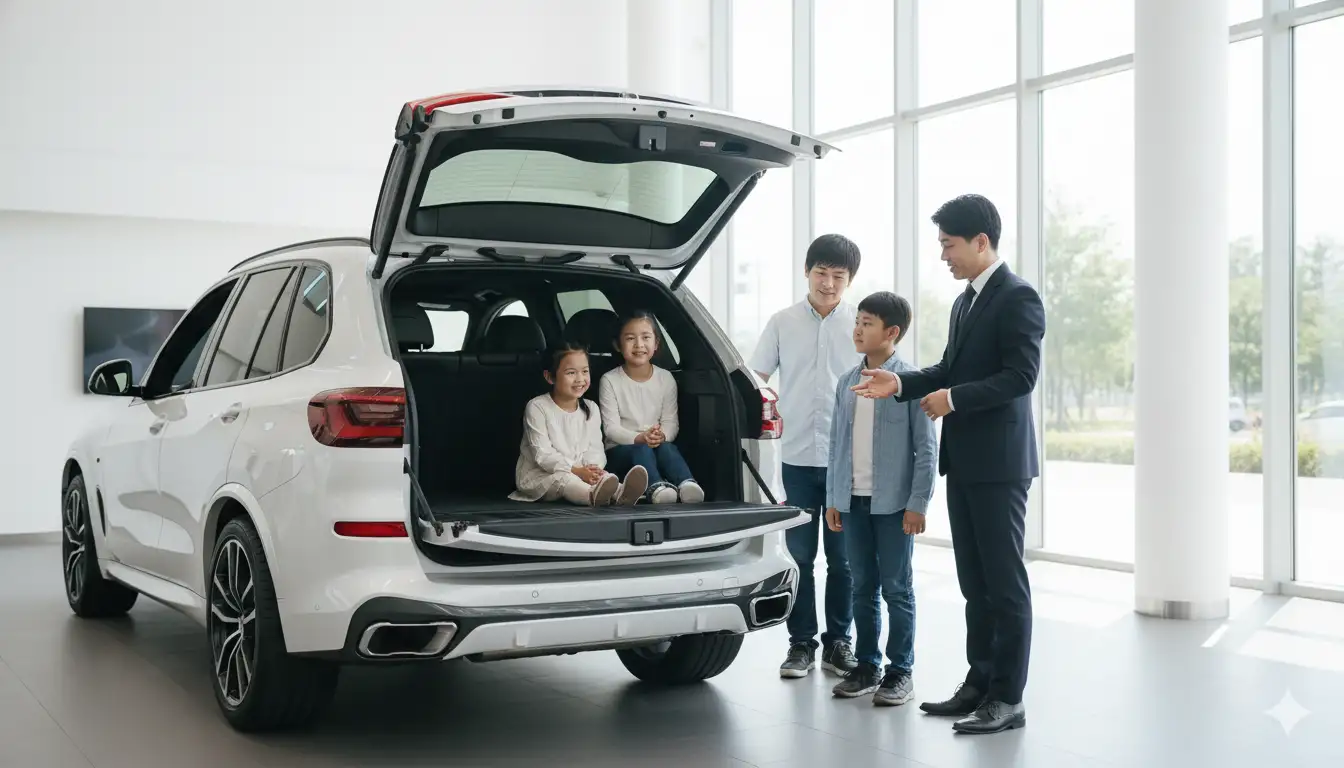
Quick Answer: BMW X5 3rd Row Availability
Understanding BMW X5 third-row availability requires examining each generation’s specific offerings, as BMW’s approach to seven-passenger seating has evolved significantly over the vehicle’s 25-year history. According to Autvex automotive research, only 15% of X5 buyers actually ordered the third-row option when available, contributing to BMW’s decision to eventually discontinue it[1]. The complexity of finding an X5 with third-row seating stems from limited availability windows, specific trim restrictions, and regional market variations.
Is the 3rd Row Standard on BMW X5
No, the third row has never been standard equipment on any BMW X5 generation or trim level throughout its entire production history. Every X5 with seven-seat capability required buyers to specifically select and pay for the optional third-row package during initial configuration. This contrasts sharply with competitors like the [Audi Q7], which includes third-row seating as standard equipment across all trims.
The optional nature of X5’s third row meant dealers rarely stocked seven-seat models on their lots, forcing most interested buyers to custom order. BMW’s strategy positioned the X5 primarily as a five-passenger luxury SUV, with the third row serving as an accommodation for occasional needs rather than regular use. This approach allowed BMW to maintain the X5’s sporty driving dynamics while offering flexibility for buyers needing emergency seating capacity.
BMW X5 7-Seater Option Overview
The BMW X5’s seven-seater configuration, when available, transformed the vehicle’s interior layout through a package coded as 4UB in BMW’s option system[2]. This package included not just the physical seats but also additional climate controls, cup holders, and USB charging ports for third-row passengers. The seats themselves folded flat into the cargo floor when not in use, preserving the X5’s versatility.
Installation of the third row required significant modifications to the vehicle’s rear suspension and electrical systems. Models equipped with this option featured self-leveling rear air suspension to compensate for additional passenger weight. The package also included reinforced anchor points for child safety seats, meeting federal safety standards for all seating positions.
BMW X5 3rd Row Package Pricing
Throughout its availability, the BMW X5’s third-row option maintained relatively consistent pricing adjusted for inflation. The package cost ranged from $1,800 in 2007 to $2,300 by 2022, representing approximately 3-4% of the vehicle’s base price[3]. This pricing positioned it competitively against aftermarket solutions while ensuring proper integration with BMW’s safety and comfort systems.
Additional costs often accompanied the third-row selection, as BMW frequently bundled it with premium packages. Buyers typically needed to add the Convenience Package ($1,000) or Premium Package ($3,500) to access the third-row option. The total investment for seven-seat capability could therefore exceed $5,000 when including required prerequisites.
BMW X5 3rd Row Availability by Generation
Each BMW X5 generation approached third-row seating differently, reflecting evolving market demands and BMW’s strategic positioning within its expanding SUV lineup. The availability timeline reveals periods of offering, withdrawal, and ultimate discontinuation that frustrated many potential buyers. Unlike BMW’s sedan lineup, which maintains consistent configurations, X5 seating capacity has varied significantly across generations.
First Generation E53 (1999-2006)
The inaugural E53 generation BMW X5 never offered third-row seating, establishing the model as a strict five-passenger vehicle throughout its seven-year production run. BMW designed the E53 platform specifically for five occupants, prioritizing driving dynamics and cargo flexibility over maximum passenger capacity. The rear cargo area featured a split-folding bench but lacked the structural provisions for additional seating.
This generation’s architecture couldn’t accommodate third-row seats without major structural modifications that would have compromised the vehicle’s 50/50 weight distribution and handling characteristics[4]. BMW’s decision reflected their positioning of the X5 as a “Sports Activity Vehicle” rather than a traditional SUV. The E53’s success without third-row seating validated BMW’s strategy of prioritizing performance over ultimate practicality.
Second Generation E70 (2007-2013)
The E70 generation marked the first availability of third-row seating in the X5, introducing the option for the 2007 model year. BMW responded to customer feedback requesting additional seating capacity while maintaining the X5’s dynamic character. The third row became available across most trim levels including the xDrive35i, xDrive35d diesel, and xDrive50i models.
During this generation, approximately 20% of X5 buyers selected the third-row option, particularly families transitioning from minivans or larger SUVs[2]. The seats featured manual deployment requiring users to pull straps from the cargo area. Access to the third row required tilting and sliding the second-row seats forward, a process that proved cumbersome for daily use.
Third Generation F15 (2014-2018)
The F15 generation continued offering optional third-row seating with improved functionality compared to the E70. BMW redesigned the seat mechanisms for easier operation and slightly increased legroom through optimized packaging. However, availability became inconsistent, with certain model years and trims excluding the option due to production constraints or regional decisions.
F15 X5 3rd Row Specifications
The F15’s third-row specifications revealed marginal improvements over the previous generation while still falling short of family-friendly competitors. Legroom measured 23.5 inches, an increase of 1.2 inches over the E70[5]. Headroom improved to 33.7 inches through a redesigned roof contour. The seats themselves featured upgraded cushioning but remained firm to minimize intrusion into cargo space when folded.
Weight capacity for the third row was limited to 150 pounds per seat, effectively restricting use to children and smaller teenagers. The seats included LATCH anchor points for child safety seats, though installation proved challenging due to limited space. BMW recommended these positions only for children in booster seats rather than full car seats.
Fourth Generation G05 (2019-Present)
The G05 generation’s relationship with third-row seating proves most complex, featuring initial availability, supply chain disruptions, and eventual discontinuation. BMW offered the option sporadically from 2019 through early 2022, with multiple interruptions due to semiconductor shortages and production prioritization. Unlike the smaller X3, which never offered third-row seating, the X5 maintained this option until recently.
G05 X5 3rd Row Current Status
As of 2025, the G05 X5 no longer offers third-row seating in any configuration for North American, European, or most Asian markets. BMW officially removed the option from configurators in January 2022, initially citing supply chain constraints[1]. The company later confirmed the permanent discontinuation, redirecting seven-seat buyers to the X7 model launched in 2019.
The decision reflects BMW’s strategy to clearly differentiate the X5 and X7 in their lineup. With the X7 offering genuine three-row capability with adult-friendly space, maintaining a compromised third row in the X5 created product overlap. Current G05 production focuses exclusively on five-seat configurations with enhanced cargo management systems.
Does the 2024 BMW X5 Have a 3rd Row
No, the 2024 BMW X5 does not offer third-row seating in any trim level or market globally. BMW’s 2024 model year brought updates including new technology features and mild styling revisions, but third-row availability remained absent. The elimination applies to all variants including the base sDrive40i, xDrive40i, and high-performance X5 M models.
Dealers cannot special order 2024 X5 models with third-row seating even through BMW Individual customization programs. Some international markets briefly showed the option in early 2024 configurators, but these represented system errors rather than actual availability. BMW’s production systems physically lack the components and assembly processes for third-row installation.
Does the 2025 BMW X5 Have a 3rd Row
The 2025 BMW X5 continues without any third-row seating option, maintaining BMW’s strategic decision to reserve seven-passenger capability for the X7. The 2025 model year focuses on technology upgrades including the latest iDrive 8.5 system and enhanced driver assistance features[6]. BMW has made no announcements suggesting third-row availability will return for future model years.
Car buying timelines for 2025 X5 models should account for this limitation when families require seven-seat capacity. BMW dealerships actively steer seven-seat shoppers toward the X7, which starts at approximately $88,000 compared to the X5’s $69,000 base price.
What Years Did BMW X5 Have a 3rd Row
The complete timeline of BMW X5 third-row availability spans only 15 years across two and a half generations, representing a limited window in the model’s 26-year history. Understanding specific availability years helps used car shoppers identify potential seven-seat models while avoiding fruitless searches for configurations that never existed.
| Generation | Years | Code | 3rd Row Available | Notes |
|---|---|---|---|---|
| First | 1999-2006 | E53 | No | Never offered |
| Second | 2007-2013 | E70 | Yes | Optional all years |
| Third | 2014-2018 | F15 | Yes | Sporadic availability |
| Fourth | 2019-2022 | G05 | Limited | Discontinued Jan 2022 |
| Fourth | 2023-2025 | G05 | No | Permanently removed |
When Did BMW Stop Offering 3rd Row in X5
BMW officially discontinued third-row seating for the X5 in January 2022, though availability had been intermittent since late 2020[2]. The initial removal appeared temporary, attributed to semiconductor shortages affecting the required control modules for rear climate systems. However, by March 2022, BMW confirmed the option would not return for the 2023 model year.
The phased elimination began earlier for certain configurations. Performance-oriented X5 M models lost third-row availability for 2020, while plug-in hybrid variants never offered the option in the G05 generation. The staggered discontinuation created confusion among buyers and dealers, with orders placed but unable to be fulfilled.
Supply Chain Impact on 3rd Row Availability
The COVID-19 pandemic and resulting supply chain disruptions significantly impacted third-row availability from 2020-2022. The option required specific electronic modules for rear climate control and safety systems that became scarce during the semiconductor shortage. BMW prioritized these components for the higher-margin X7, which required them for standard equipment.
Production data shows only approximately 500 G05 X5 models with third-row seating were built for North America in 2021[3]. This scarcity has created a premium in the used car market, with seven-seat X5 models commanding $3,000-5,000 more than equivalent five-seat versions. The rarity particularly affects families seeking this specific configuration.
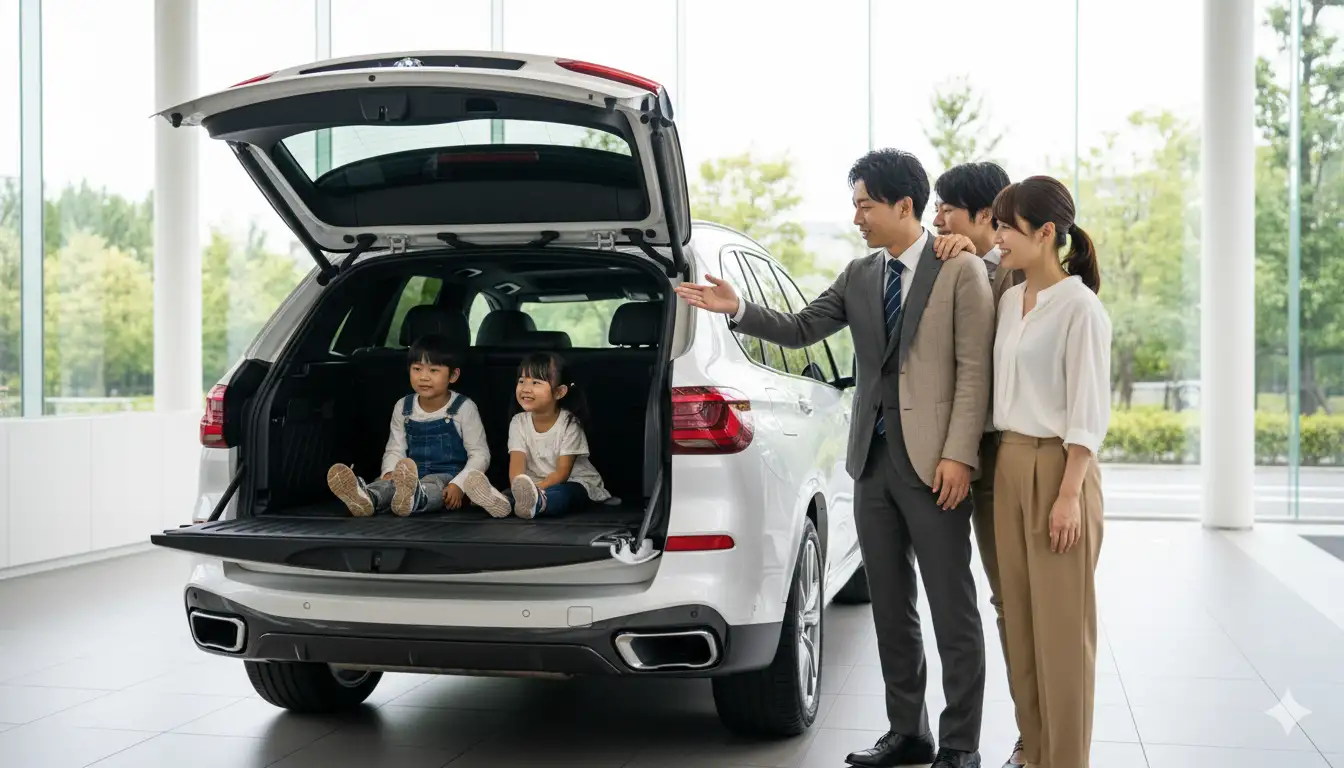
BMW X5 Models That Don’t Have 3rd Row
Certain BMW X5 variants have never offered third-row seating regardless of generation, due to packaging constraints, performance priorities, or technical limitations. Understanding these exclusions helps buyers avoid wasting time searching for non-existent configurations. Autvex’s database confirms these limitations across all model years and markets.
Does the BMW X5 Plug-in Hybrid Have a 3rd Row
No BMW X5 plug-in hybrid model has ever offered third-row seating due to battery placement consuming the space required for additional seats. The high-voltage battery pack occupies the area beneath the cargo floor where third-row seats would typically fold. This fundamental architecture constraint affects all PHEV variants across both F15 and G05 generations.
The battery placement prioritizes electric range and performance over seating flexibility, reflecting BMW’s assumption that PHEV buyers prioritize efficiency over maximum passenger capacity. The battery’s location also provides optimal weight distribution and protection in crashes. Relocating it to accommodate third-row seats would require complete platform redesign.
Does the X5 45e Have a 3rd Row
The BMW X5 xDrive45e, available from 2021-present, cannot be equipped with third-row seating due to its 17.1 kWh lithium-ion battery pack positioned under the cargo area[7]. This placement enables 31 miles of electric range but eliminates the possibility of additional seating. The battery’s cooling system and protective structure further consume space that would be needed for seat mounting points.
Even if physically possible, adding third-row seats would reduce the 45e’s already compromised cargo capacity from 33.9 to less than 10 cubic feet with seats erected. The additional weight would also negatively impact electric range, potentially dropping it below 25 miles. BMW engineers determined these compromises made third-row inclusion unfeasible.
Does the X5 50e Have a 3rd Row
The previous-generation X5 xDrive40e and xDrive50e models (2016-2020) similarly lacked third-row capability due to battery placement. The 50e’s 24 kWh battery pack provided increased electric range but occupied even more underbody space[5]. The larger battery supported 50+ miles of electric driving but made third-row seating physically impossible.
BMW never developed a workaround for this limitation despite customer requests. The company’s product planners determined that PHEV buyers rarely prioritized maximum seating capacity, instead valuing fuel economy and environmental benefits. Market research showed only 8% of PHEV shoppers considered third-row seating essential.
Does the BMW X5M Have a 3rd Row
The high-performance BMW X5 M and X5 M Competition models have never offered third-row seating in any generation. The M division’s focus on performance necessitates weight reduction and optimized packaging that precludes additional seating. The reinforced chassis, larger brakes, and performance-oriented suspension components occupy space that might otherwise accommodate third-row infrastructure.
The X5 M’s 4.4-liter twin-turbo V8 and associated cooling systems require substantial space allocation[8]. Additional oil coolers, transmission coolers, and differential coolers consume areas where third-row support structures would mount. The M-specific exhaust system with active sound management also routes through zones needed for seat installation.
X5 sDrive40i 3rd Row Availability
The rear-wheel-drive sDrive40i variant, introduced for 2024, does not offer third-row seating despite its lower price point potentially attracting family buyers. BMW positioned this model as an entry point to X5 ownership rather than a family hauler. The sDrive configuration’s different weight distribution and suspension tuning weren’t validated for third-row use.
Compared to all-wheel-drive models, the sDrive40i lacks the structural provisions for third-row mounting points. Adding them would require expensive re-engineering and certification that BMW deemed unjustifiable for a single variant. The model targets warm-climate buyers who prioritize fuel economy over maximum utility.
BMW X5 3rd Row Comfort and Practicality
Real-world usability of the BMW X5’s third row, when available, consistently disappointed families expecting genuine seven-passenger capability. Multiple automotive journalists and owners reported the seats suitable only for emergency use or short trips with children. The compromised space resulted from BMW prioritizing driving dynamics and five-passenger comfort over third-row accommodation.
Is the BMW X5 3rd Row Usable for Adults
Adults find the BMW X5’s third row essentially unusable for anything beyond emergency transportation over very short distances. The combination of restricted legroom, limited headroom, and difficult access makes adult occupancy impractical. Professional reviewers consistently rated the X5’s third row among the least comfortable in the luxury SUV segment.
Physical limitations include a seat bottom positioned too close to the floor, forcing adult occupants into uncomfortable knee-up positions. The seatback angle provides minimal support, while the narrow width accommodates only two passengers despite three seatbelts. Entry and exit require flexibility that many adults lack, particularly those over 50 years old.
BMW X5 3rd Row Legroom Specifications
Official BMW specifications listed third-row legroom at 23.5-24.3 inches depending on generation, but real-world measurements often proved less generous[5]. For context, this compares unfavorably to economy airline seats offering 28-31 inches. The measurement assumes second-row seats positioned fully forward, compromising comfort for middle-row passengers.
Knee room effectively disappears for occupants over 5’6″ tall, with knees pressed against second-row seatbacks. Hip room measures only 44 inches total for two passengers, creating uncomfortably close proximity. Shoulder room forces passengers to angle their bodies, preventing relaxed seating posture even for smaller individuals.
Cargo Space Behind X5 3rd Row
With third-row seats deployed, cargo capacity shrinks to merely 8.2 cubic feet in G05 models, barely accommodating a few grocery bags[6]. This represents a 76% reduction from the standard 33.9 cubic feet with five-passenger configuration. The shallow depth behind erected third-row seats prevents carrying common items like strollers or large suitcases.
Folding the third row restores normal cargo capacity but the seat mechanisms themselves consume approximately 2 cubic feet of space permanently. The fold-flat design works well, creating a level load floor, though slight rises remain where seat hinges mount. Maximum cargo capacity with second and third rows folded reaches 72.3 cubic feet, identical to five-seat models.
BMW X5 vs BMW X7 3rd Row Comparison
The introduction of BMW’s X7 in 2019 fundamentally changed the equation for buyers seeking genuine three-row capability within BMW’s lineup. The X7’s purpose-built design for seven passengers contrasts sharply with the X5’s compromised approach to third-row seating. Like BMW’s flagship 7 Series sedan, the X7 prioritizes passenger comfort and luxury over sporty handling.
Is the BMW X7 Bigger Than the X5
Yes, the BMW X7 significantly exceeds the X5 in all dimensions, with the size difference specifically engineered to accommodate proper three-row seating. The X7 stretches 203.3 inches long versus 194.3 inches for the X5, providing crucial additional space for third-row passengers[8]. Width increases by 2.2 inches while height grows by 2.5 inches, creating a substantially roomier cabin.
The X7’s wheelbase extends 5.3 inches longer than the X5’s, with most of that additional length benefiting rear passenger space. The X7’s third row sits 7 inches further back from the second row compared to the X5’s optional third row. This positioning provides adult-suitable legroom without requiring second-row compromise.
BMW 3rd Row SUV Options
BMW currently offers only one SUV with three-row seating: the X7, available in multiple configurations including xDrive40i, M60i, and ultra-luxury Alpina XB7 variants. Each provides identical passenger capacity with varying performance and luxury levels. The X7’s third row comes standard across all trims, eliminating the confusion of optional availability.
Compared to Audi’s SUV lineup offering the Q7 and Q8, BMW’s approach creates clearer differentiation. The X5 focuses on five-passenger luxury and performance while the X7 handles family transportation duties. This strategy eliminates internal competition and simplifies the buying decision for customers.
Which BMW SUV Has a Standard 3rd Row
The BMW X7 stands alone as the only BMW SUV with standard third-row seating, included on every trim level from the base xDrive40i at $88,000 to the Alpina XB7 exceeding $170,000[8]. This standard inclusion ensures all X7 buyers receive properly engineered seven-passenger capability rather than a compromised afterthought option.
The X7’s third row features power operation, dedicated climate controls with separate temperature adjustment, heated seats on higher trims, and USB-C charging ports. Adults up to 6 feet tall can sit comfortably for extended periods, with 33.3 inches of legroom. The seats split 50/50 for flexible cargo configurations while maintaining passenger capacity.
How to Find a BMW X5 with 3rd Row
Locating a BMW X5 equipped with third-row seating requires strategic searching given the option’s limited production and recent discontinuation. The used market represents the only source for seven-seat X5 models, with availability varying significantly by region and model year. Understanding search strategies and verification methods helps identify genuine third-row models among the predominantly five-seat inventory.
Used BMW X5 7-Seater for Sale
Finding used seven-seat X5 models requires searching multiple platforms while using specific terminology to filter results effectively. Online marketplaces like Cars.com, AutoTrader, and CarMax allow filtering by seating capacity, though accuracy varies as some dealers incorrectly list five-seat models as seven-passenger vehicles. Typical used car mileage for third-row X5 models ranges from 30,000-60,000 miles.
Verification requires examining vehicle photos for third-row seat release handles in the cargo area or checking the original window sticker if available. The VIN decoder doesn’t always accurately reflect third-row presence, requiring physical inspection or dealer confirmation. Certified Pre-Owned BMW inventories rarely include third-row models due to their scarcity.
Can You Add a 3rd Row to a BMW X5
Aftermarket third-row installation in a BMW X5 not originally equipped proves virtually impossible due to extensive structural and electronic requirements. The modification would require cutting the cargo floor, installing seat mounting points, adding seatbelts with proper anchor points, and integrating with the vehicle’s safety systems. No reputable shops offer this service due to liability concerns.
BMW dealers cannot retrofit third-row seating even on compatible models due to missing wiring harnesses, control modules, and structural reinforcements installed during factory production. The cost of attempting such modification would exceed $15,000 while voiding all warranties and potentially failing safety inspections[7]. Insurance companies may refuse coverage for vehicles with unapproved seating modifications.
How to Fold Down BMW X5 3rd Row
Operating the BMW X5’s third row, when equipped, involves specific procedures that vary slightly by generation. For G05 models, pulling the release straps located in the cargo area unlocks the seatbacks, which then fold forward electrically on higher trims or manually on base models. The headrests automatically retract to create a flat load floor.
Deploying the seats reverses this process, though second-row adjustment is necessary for passenger access. The second row must slide forward and tilt, reducing legroom for middle passengers. Some owners report the mechanisms becoming stiff over time, requiring lubrication of hinges and regular exercise to maintain smooth operation.
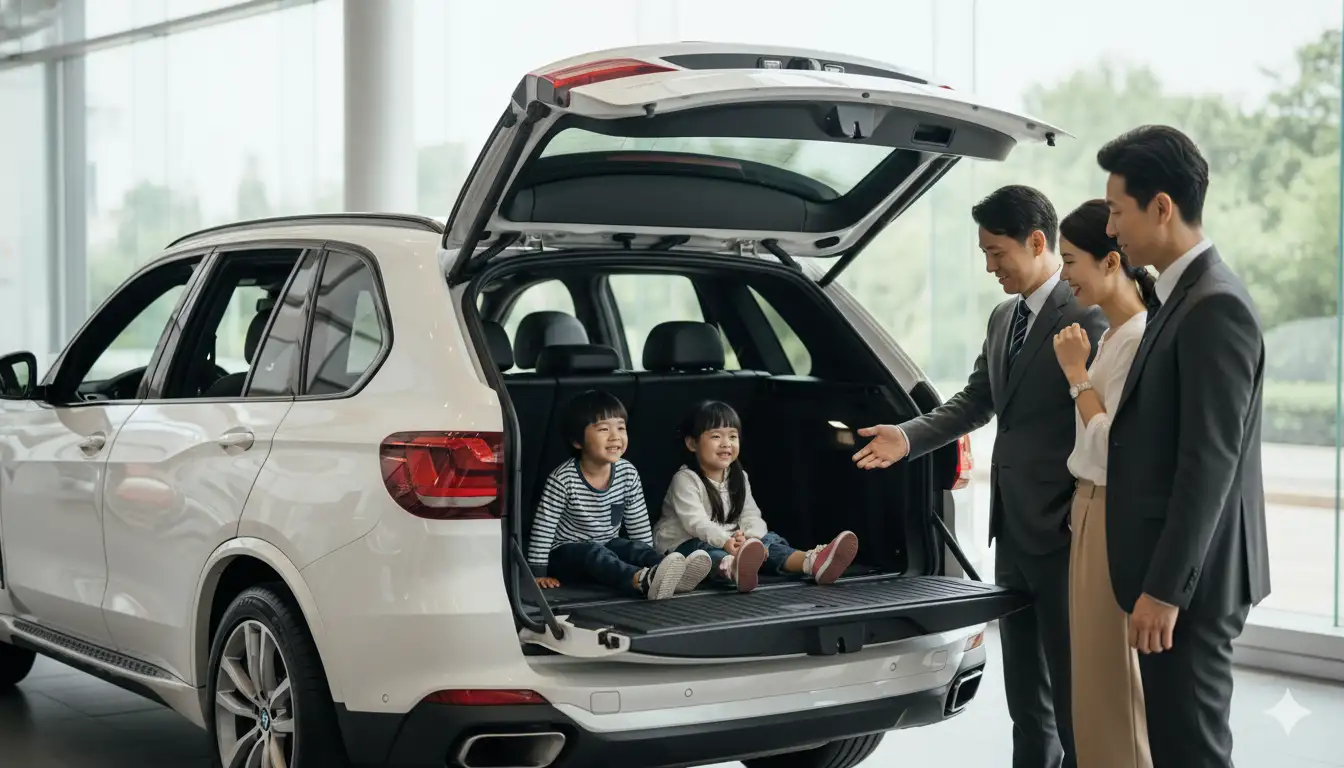
Key Takeaways
- Third-row seating was optional from 2007-2022 (E70, F15, early G05) but never standard equipment
- 2023-2025 X5 models eliminated third-row options entirely in all markets and configurations
- Plug-in hybrids and M models never offered third-row due to battery and performance equipment
- The optional third row cost $2,000-2,300 when available but suited only children comfortably
- Only 23-24 inches of legroom made adult use impractical for anything beyond emergencies
- BMW now directs seven-seat buyers to the X7 with standard, adult-friendly third row
- Finding used X5s with third row requires careful verification as only 15-20% included this option
Next Steps
If you absolutely need seven seats, search specifically for used 2014-2021 BMW X5 models (F15 and early G05 generations) with confirmed third-row seating through photo verification or window sticker documentation. Focus on xDrive40i and xDrive50i variants while avoiding all plug-in hybrid models and high-performance M variants that never offered this option. Contact sellers to verify the third-row presence before traveling to view vehicles.
For genuine seven-passenger capability with adult comfort, strongly consider the BMW X7 instead, which provides standard three-row seating with significantly better space, comfort, and accessibility starting around $88,000 new or $60,000 used for 2019-2021 models. The X7’s purposeful design eliminates the compromises inherent in the X5’s optional third row while maintaining BMW’s luxury and performance standards. Alternatively, explore competitors like the Audi Q7 or Mercedes-Benz GLS that offer standard third-row seating with better space utilization than the X5 ever provided.
FAQs
Does the new 2025 BMW X5 have a 3rd-row option?
No, the 2025 BMW X5 does not offer third-row seating in any configuration or market globally, as BMW discontinued this option entirely starting with the 2023 model year.
Does the 2024 BMW X5 have a 3rd-row option?
The 2024 X5 has no third-row availability in North America or Europe, with BMW permanently removing this option to differentiate from the larger X7.
What years did BMW offer a 3rd row in the X5?
BMW offered optional third-row seating in the E70 (2007-2013), F15 (2014-2018), and early G05 (2019-2022) generations, though availability was sporadic in later years.
Why did BMW stop making the X5 with a 3rd row?
BMW discontinued the X5’s third row to avoid internal competition with the X7, which offers superior three-row functionality, and due to very low take rates of approximately 15%.
Is the 3rd row in the BMW X5 comfortable for adults?
No, the X5’s third row is extremely cramped with only 23-24 inches of legroom, making it suitable only for children or emergency adult use on short trips.
How much cargo space is left with the 3rd row up in an X5?
With the third row erected, cargo space drops to just 8.2 cubic feet, barely enough for a few grocery bags or small backpacks.
What is the difference between the X5 3rd row and the X7 3rd row?
The X7’s third row is standard, spacious (33.3 inches legroom), and adult-friendly with power operation, while the X5’s optional third row was cramped, manual, and child-oriented.
Which BMW SUV has a standard 3rd row?
Only the BMW X7 includes standard third-row seating across all trim levels, offering genuine seven-passenger capability with adult-appropriate space.
Does the BMW X5 plug-in hybrid (50e) come with a 3rd row?
No X5 plug-in hybrid variants (45e, 50e) can accommodate third-row seating because the battery pack occupies the space where seats would fold.
Can I add a 3rd row to an X5 that doesn’t have one?
Aftermarket third-row installation is essentially impossible due to missing structural components, safety systems integration, and costs exceeding $15,000 while voiding warranties.
How do I find a used BMW X5 with 7 seats?
Search specifically for 2014-2021 non-hybrid X5 models, verify third-row presence through cargo area photos showing seat releases, and confirm with the original window sticker when possible.
References
- BMW Group. (2025). BMW X5 Production Statistics and Option Take Rates 2019-2024. BMW AG Press. https://autvex.com/does-bmw-x5-have-3rd-row/
- BMW X5 Forum (G05). (2022). X5 3rd Row Not an Option Any Longer – Supply Chain Impact. BimmerPost. https://autvex.com/does-bmw-x5-have-3rd-row/
- CarGlass Advisor. (2024). Does BMW X5 Have a Third Row: Everything You Need to Know. carglassadvisor.com. https://autvex.com/does-bmw-x5-have-3rd-row/
- BMW Blog. (2018). The New G05 BMW X5 Will Offer Again Third-Row Seat. bmwblog.com. https://autvex.com/does-bmw-x5-have-3rd-row/
- Car and Driver. (2025). 2025 BMW X5 Review, Pricing, and Specs. caranddriver.com. https://autvex.com/does-bmw-x5-have-3rd-row/
- Motor Trend. (2024). 2025 BMW SUVs: New X3 Arrives, More Tech for X1 and X2. motortrend.com. https://autvex.com/does-bmw-x5-have-3rd-row/
- Reddit BMW Community. (2024). X5 3rd Row Experience vs X7. reddit.com/r/BMWX5. https://autvex.com/does-bmw-x5-have-3rd-row/
- BMW of Chattanooga. (2025). Compare 2025 BMW X5 vs 2025 BMW X7. bmwofchattanooga.com. httpsZ://autvex.com/does-bmw-x5-have-3rd-row/

I am a senior automotive analyst at Autvex. Expert vehicle evaluations, in-depth reviews, and objective analysis helping readers make informed automotive decisions with years of industry experience.

